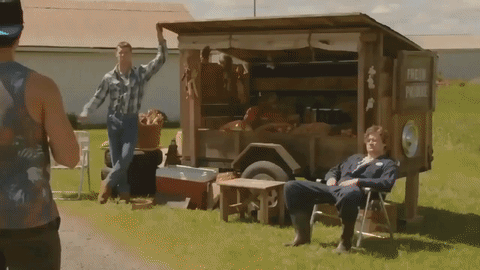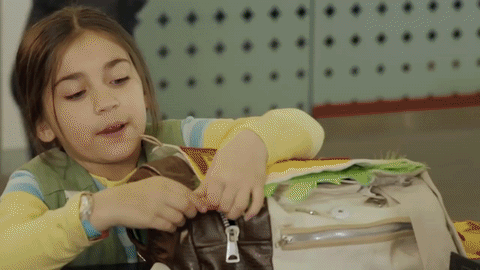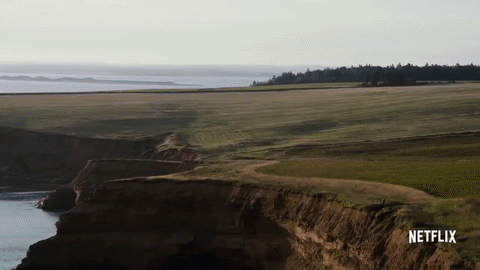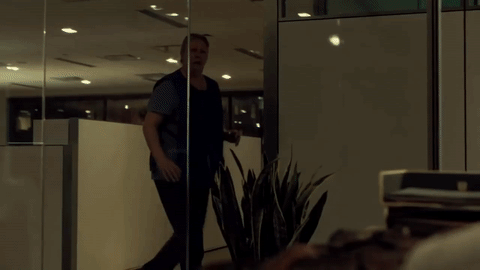
Homegrown shows and strategies that are thriving in television’s brave new world
In CFC’s talks with players in the industry, one point that constantly recurs is the huge importance of social media in not only promoting new shows, but also enabling the kind of organic development that audiences perceive as a badge of authenticity in the digital age. Averse to traditional marketing efforts, viewers want to feel like they’re the ones discovering shows and – once they can stake a claim – then have ways of maintaining that connection.
The Canadian success story that best fits this bill is Letterkenny, the endearingly foul-mouthed comedy set in a fictional Ontario small town that’s every bit as rich in character as Dog River or the Sunnyvale Trailer Park. It’s based on Listowel, the hometown of the show's star, co-creator and co-writer, Jared Keeso. Like Broad City and High Maintenance in the U.S., Letterkenny began life as a web series in 2013 that ultimately capitalized on its high-view tallies and media coverage to make the jump to full-fledged TV show.

Though its first season aired on the Comedy Network, Letterkenny has been more heavily promoted as an attraction for CraveTV, where it draws more viewers than Seinfeld and South Park. Letterkenny’s second season debuted on Christmas Day, with a St. Patrick's Day special arriving a few months later. Production on the third season began in February 2017.
In an interview with CFC, Keeso explains that he had been trying out ideas for an online comedy series for a few years before landing on Letterkenny’s formula. Indeed, the series’ first incarnation was a phony Twitter account he shared with a buddy that spoofed small-town ways and sayings. When the view counts for the first Letterkenny Problems short videos started rising on YouTube, Keeso – whose other show, the Bravo cop drama 19-2, has become another CraveTV fixture – believed it was strong enough to make the transition.
“It’s no secret that nobody has any money,” says Keeso. “We’re in a situation here where Bell’s cutting lots of jobs, Rogers cut lots of jobs, Shaw has been bought out by Corus entirely. We had the distinct advantage that we went in with a built-in viewership, we already had an audience. We were bringing in a concept that’s already tested. Having that viewership and hype before it had even been on television helped us a lot.”
Montefiore notes how vitally important that quality of stickiness is in such a crowded field. “There was a time when it was enough just to get a show made. Getting it out there is just as important now – if no one’s gonna watch it, then what the hell is the point?”
Increasingly, it may be up to content creators and producers to figure out how to forge those relationships between shows and viewers. What’s more, as Moyra Rodgers believes, it has to happen as early as possible, thereby employing strategies may not also be simpatico with the traditional marketing models still preferred by many broadcasters and distributors. “There’s a whole bunch of nuanced considerations that now have to be thought about,” she notes. “Typically broadcasters promote a show two to three weeks before it airs but producers could be building audience and creating awareness and engagement for their programs in development, certainly in production."
“I think we need a new playbook that defines a set of new collaborative rules around audience-building.”
The recent Internet furor over the two very different strategies for marketing Anne points to how crucial those new rules may be now that such efforts are no longer safely siloed in the marketers’ respective territories. Just as the series was finishing its run on CBC-TV in Canada, Netflix prepared for the show’s May 12, 2017 launch of its service in other countries under another name, Anne with an E. Yet that wasn’t nearly as objectionable to defenders of Green Gables as Netflix’s many changes to the CBC’s original promotional poster, including the near-total disappearance of the freckles on the face of star Amybeth McNulty. (“It looks like they’re trying to make her look more glamorous or prettier or something,” one concerned Prince Edward Islander told the CBC.)
Jared Keeso

“Working with Amazon, it really is 100 per cent about the creative,” Johnson says. “They are not trying to appease advertisers or worrying about how it drives to a commercial break or works next to another show. They are focused on that one show being great for whatever audience it’s trying to serve.
“What’s nice about these new emerging networks is it’s now your job as a producer to drive people to the place where that show is going to exist forever. It’s not in a time slot that might shift and you have no control over. That show is there and if you want people to find it, it’s your job to make sure there’s enough news and things around it to keep people interested.” Another show with Amazon investment, Dino Dana, is Sinking Ship’s next series on deck – the TIFF Kids hosted a preview in April 2017.
Of course, series still get lost and overlooked in the glut. Yet the medium’s new post-timeslot reality fosters a certain “build-it-and-they-will-come” attitude. For one thing, audiences have a better chance of discovering great shows if those shows can stay in one place for longer.
“With hundreds of series out there, sometimes it takes a while just for the word-of-mouth to happen,” says Christina Jennings. That’s what happened with Carmilla, Shaftesbury’s LGBTQ-themed mystery series that racked up over 69 million YouTube views over three seasons. “We could see what happened to the audience at episode 20 – the numbers just went bam! Fans started finding it.”
Producers are also realizing that having a stable home in the digital marketplace means other marketing or sponsorship opportunities. They’re looking ahead to a point when the seemingly all-powerful network brand – be it Netflix or HBO – loses its relevance with a new generation of viewers whose loyalty is first and foremost to the content they love. Johnson already seeing that trend via his work as the co-chair of the Youth Media Alliance, which seeks to promote and protect Canadian creators of high-quality content for young viewers.
“Every year or two years we interview kids about TV and it blows my mind,” he says. “When we started eight years ago, I would ask kids what they were watching and it would always be like YTV or Treehouse or CBC. Now they list out the shows, not where they are. And when I ask, they don’t even know what network because they’re finding it on YouTube or they’re rewatching it on Netflix or wherever. It’s all about the show, which means again that the content creators just have that much more say and power than they ever had before.”
PART 5/5
Another point that draws wide agreement among Canadian TV producers is that the global appetite for unique content means a widening diversity of possible producing partners and financing sources. Indeed, Johnson goes so far as to call this the “golden era of financing,” though he supplies some caveats for that statement. “Everyone knows that costs are going up and that they have to be realistic and may not be able to finance wholly out of one country,” he says. “Once you start to branch out, there are lots of challenges.”
One challenge for Canadian producers and networks is retaining domestic broadcast rights when entering into partnerships with Netflix and other American players. But Johnson sees a massive shift underway in that regard. “Netflix and Amazon are also getting to the size now where they’re open to buying out Canada entirely,” he says. “It’s very telling of the quality of the stuff coming out of Canada that the money advantage of producing here has suddenly been offset by the fact that we also make great shows and have great creative talent and the world is willing to pay for that.”
Yet it’s important to consider the advantages of coproductions with Europeans that may not need a big U.S. backer. Jennings says that she’d rather partner with French or British broadcasters if given the choice. “That’s because we actually have something in common with the French and British, which is that we are smaller countries that don’t have vast pots of money to make content so we need partnerships. Content is very easily disposable in America – they put so many scripts into development and shoot so many pilots. In Canada and other countries, we can’t afford to discard our content that quickly. So if a broadcaster here orders 13 episodes – trust me, they’re going to run all 13 episodes.”
She adds that working with Americans increases the risk of an age-old problem for Canadian content creators. “They don’t want it to feel too Canadian,” she says. “Every producer I know has had that situation of not using our money and not showing license plates and all that stuff. In fairness, that is changing. Netflix and some of the smaller cable networks like BBC America, have started to say, ‘Well, it’s Canadian and that’s great.’”
It also doesn’t hurt that the show is really funny. Sticking to the web series’ format as closely as possible, Keeso and co-creator and co-writer Jacob Tierney have made it their mission to make sure the episodes achieve maximum joke density. “The goal was making as many laughs as possible on a second-to-second basis,” says Keeso. “Another thing that really worked for the web series was contagious dialogue and so we tried to incorporate as much of that as possible in there as well.”
Letterkenny co-producer, Mark Montefiore, also emphasizes the importance of those quotable lines. “It’s those things we can put on T-shirts or people use in their daily lives,” he says. “It’s amazing how little onus is put on that in television these days. I think of how many times on a Monday morning, me and my friends would be running around imitating Goat Boy or whatever was on Saturday Night Live. That’s a tool you can give the audience to use and mimic.”
Christina Jennings sees such viewer responses as a pivotal part of any new playbook. She points to the growing importance of Shaftesbury’s social team over the last five years and how it has fostered this new two-way dynamic between shows and fans. That’s just one example of the changes in how viewers consume and interact with content. “It’s an overused expression but you really do have to consider the whole 360,” she says. “As a producer now, you can’t just have a great idea for a show – you need to know what your digital play is, what your fan play is, whether there’s a merch play or a live-event play. You need to know all those extensions because the content isn’t just a one-off thing – you’re building a brand in the world.”
That means not just considering the 360 aspect but the 24/7 one, too. Keeso makes good on that commitment by staying on top of Letterkenny’s Facebook and Twitter accounts. “I wanna see what people are saying about it,” he says. “On past shows and projects, there was a certain point where I’d give up on that, but I haven’t with Letterkenny because the feedback is just coming in so constant and routinely and it’s all been so positive. I might be having a bit of a long day, all I have to do is search that #letterkenny hashtag and see what people are saying.”
“I’ve certainly been on those shows that nobody talks about so I’m going to embrace it while we have it!”
As big as it is, the social-media piece is only one part of a much wider re-conceptualization for Canadian television. Some producers believe that the best way to capitalize on those new conditions is to take bigger, riskier swings. That was J.J. Johnson’s experience on Annedroids, which he calls “a prime example of a show that would not have gotten made” in an earlier TV paradigm. Before it debuted in 2014 on Amazon and TVO Kids, it was repeatedly rejected by U.S. networks whose executives did not believe boys would have any interest in seeing a show whose lead character was a girl scientist. The fact that the series also concerned an android on a quest to determine its own gender was another sticking point. “That show was dead until Amazon moved into TV,” he says. “And they picked it up specifically because it was a risky idea.” It was nominated for ten Daytime Emmy Awards in 2016.
Yet does it really serve Canadian TV to be identifiably Canadian? And how many Canadians need to be involved in making it? These questions came to the forefront once more during the CRTC’s latest round of industry conversations. Part of the government’s response was to revise its point system for recognizing Canadian content of domestic TV programs, which continues to be based on the nationality of its key creative personnel. Productions need only hit a six out of 10 to be sufficiently Canadian to qualify for the Canada Media Fund. The new rules – which came into effect September 1 2016 – prompted further waves of debate.
Montefiore believes that Canadian productions hugely benefit from the greater latitude in enlisting international talent for their teams. “We’re working on a global scale,” he says. “We can’t just think about Canada, and reflect Canada to Canadians – we have to reflect Canada to the world. And if we’re not playing on a level playing field, then we’re already at a disadvantage.”
Jennings, for her part, is wary that in this rush to export Canadian shows, we’ll lose “the very things that make them Canadian,” believing that the CRTC’s most important role is to protect Canada’s stories along with its creative industry. She adds “I’m slightly worried about this whole movement to ‘sell our shows abroad!’ There’s this idea that the only way to do that is we need bigger budgets and the only way to do that is to have big stars who aren’t Canadian. I don’t buy it. We haven’t had any trouble selling Murdoch Mysteries internationally or selling The Listener, which had no foreign stars. We can do shows that do that, and I’m happy as a company that we can, but we also don’t have to go after that one bag of money for Canadian production.”











